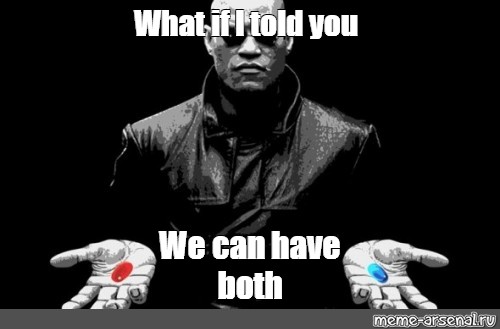Dry Sake or Sweet?
You spot a small Sake section while shopping for wine. You know enough about wine styles to tell a Riesling is sweet, a Merlot dry, but what about Sake? Can Sake even be sweet or dry? Do you know your preference? When shopping for Sake, you might look for something you tasted at a restaurant. If you can't find that, you grab whatever is cheapest, or something priced in the middle with an appealing label. Sound like you?
Everyone, myself included, has shopped this way for some kind of specialty item. For Sake, this means consideration of sweet and dry becomes an afterthought, and you may end up with something terrible - or worse: something great that just wasn't for you!
To help you judge dry and sweet, Japan developed a Sake Meter Value, or "SMV" (Nihon Shudo, in Japanese). The scale is simple: any positive (+) number would mean dry, zero neutral, and negative (-) numbers sweet. Turns out, that scale was too simple... Japanese importer and distributor JFC, created this second chart to include more factors:
Wine's sweetness or dryness is similarly affected by sweet, unfermented sugar, as well as dry tannins. Sake contains no tannins, but all sake is acidic, thanks to the brewing process that makes it rich in lactic and amino acids. That acidity can make you perceive a Sake with a negative number as dry. It also means some well-balanced Sake with plus or minus numbers can taste neutral - neither sweet nor dry. The above chart tries to account for that, as well as adding a dimension of rich-versus-light. The final consideration that cannot be calculated, is personal perception. Some people perceive fruity and floral Sake as sweet. Some also perceive rice-umami as sweet, especially in Junmai Sake. Still, this chart can prove helpful if the Sake you're looking at includes the SMV and acidity - which many actually do on the reverse, English-language label.
Good news is, if you didn't like it, you are not wrong. Even with an untrained palate, you are an expert in knowing what you like. Beyond personal preference, you can also probably tell if a Sake tastes improperly balanced. A bad dry Sake will taste too boozy (alcohol-forward) with a burning or long aftertaste, while a poorly-made sweet Sake will taste syrupy or cloying. These problems come up frequently with cheaper, domestic (American-made) and/or mass-produced Japanese Sake, but they are not the only culprits.
A final disclaimer about SMVs: higher numbers *should* mean more sweet or dry than lower numbers, but alcohol content and balance can change everything. Shimane's Kan-Nihonkai is +15, but tastes so balanced, I find it comes off as much less dry than Kurosawa Kimoto Junmai that's only +2!
My recommendation: Try to find a neutral sake. You may prefer dry or sweet, but a soft, neutral sake like Kikusui Junmai Ginjo will keep everyone happy, including you.
Do you prefer sweet or dry? Have a question or a favorite label?
Get involved! Keep the conversation going in the comments!
Everyone, myself included, has shopped this way for some kind of specialty item. For Sake, this means consideration of sweet and dry becomes an afterthought, and you may end up with something terrible - or worse: something great that just wasn't for you!
To help you judge dry and sweet, Japan developed a Sake Meter Value, or "SMV" (Nihon Shudo, in Japanese). The scale is simple: any positive (+) number would mean dry, zero neutral, and negative (-) numbers sweet. Turns out, that scale was too simple... Japanese importer and distributor JFC, created this second chart to include more factors:
| You can see their original post here: http://sakeexpert.com/saketaste.php |
Good news is, if you didn't like it, you are not wrong. Even with an untrained palate, you are an expert in knowing what you like. Beyond personal preference, you can also probably tell if a Sake tastes improperly balanced. A bad dry Sake will taste too boozy (alcohol-forward) with a burning or long aftertaste, while a poorly-made sweet Sake will taste syrupy or cloying. These problems come up frequently with cheaper, domestic (American-made) and/or mass-produced Japanese Sake, but they are not the only culprits.
A final disclaimer about SMVs: higher numbers *should* mean more sweet or dry than lower numbers, but alcohol content and balance can change everything. Shimane's Kan-Nihonkai is +15, but tastes so balanced, I find it comes off as much less dry than Kurosawa Kimoto Junmai that's only +2!
My recommendation: Try to find a neutral sake. You may prefer dry or sweet, but a soft, neutral sake like Kikusui Junmai Ginjo will keep everyone happy, including you.
 |
| Unless you're trying to pair Sake with food... more on that next time! |
Get involved! Keep the conversation going in the comments!

If you opt for the common bonus, the maximum you’ll be able to|be capable of|have the flexibility to} get is $3,000. Since we’re all about crypto right now, we 카지노사이트 propose going for the crypto bonus if you’re after a more vital offer. There’s a $3,750 crypto casino bonus up for grabs these who|for many who|for individuals who} deposit using crypto. The BitStarz cell casino is absolutely aware of smaller screens, even though fact} that|although} there is no a|there is not any} dedicated app.
ReplyDelete